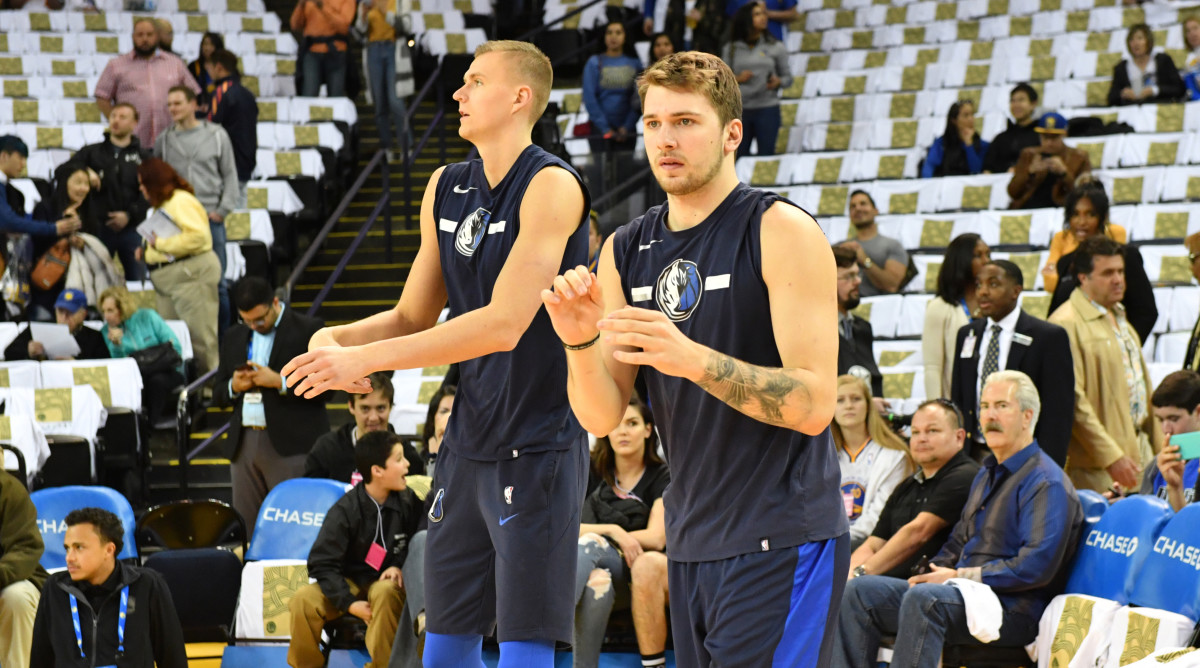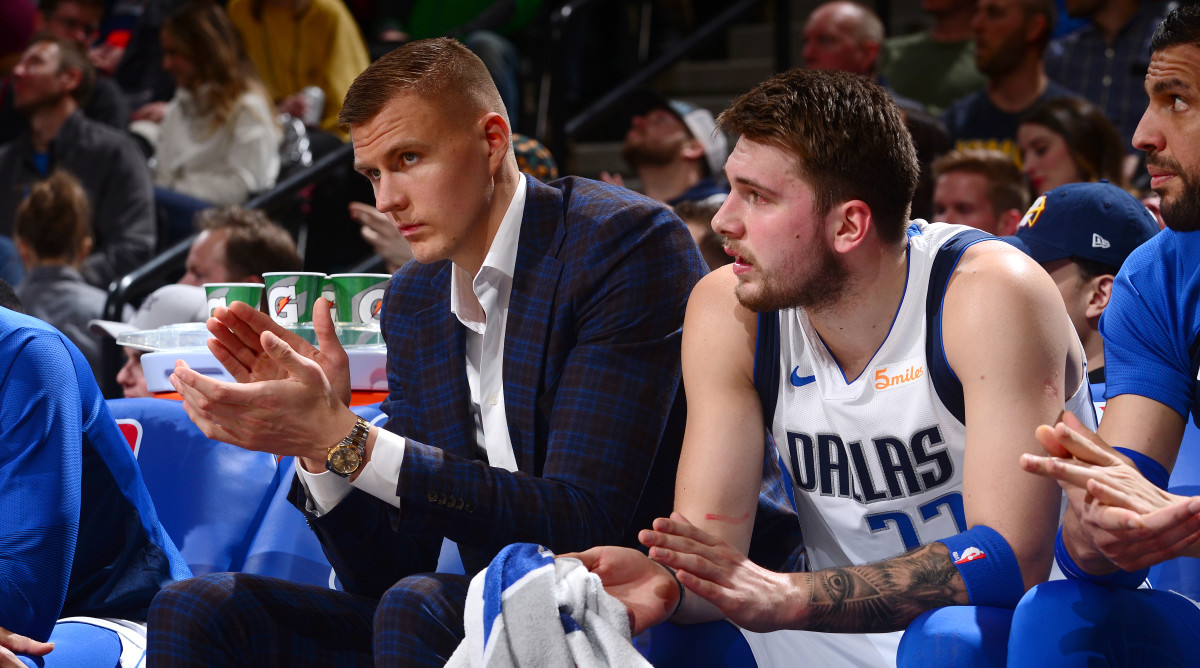Can the New-Look Mavericks Make a Playoff Push in the West?

Unlike many other teams gunning for the playoffs out West, the Mavericks can afford a year of growing pains before rising as a contender in the next decade. Kristaps Porzingis won’t hit free agency until 2023 at the earliest. Luka Doncic is entering year two of his rookie deal after winning 33 games as a rookie. Reaching 40 wins would mark true growth in 2019-20, especially in the gauntlet that is the Western Conference.
The Mavericks may not subscribe to such modest expectations. Owner Mark Cuban has turned in 15 playoff appearances in 19 years as owner, and Rick Carlisle’s 751 wins ranks third among active coaches. Luka Doncic won the Rookie of the Year last season, and there’s a certain 7’3” unicorn now residing in the Lone Star State. It’s not out of the question for the American Airlines Center to host a playoff game for the first time since 2016, though most would suggest Dallas faces an uphill battle. So where should we place the Mavericks in the conference hierarchy? We at The Crossover examined their playoff potential in the first year of the Doncic-Porzingis partnership.
There are plenty of new faces in Dallas this season, as just three of the Mavericks’ top seven rotation players from last season return for 2020: Doncic, Tim Hardaway and Dorian Finney-Smith. Harrison Barnes was dealt in February to Sacramento, and DeAndre Jordan joined Kevin Durant and Kyrie Irving in Brooklyn. Dennis Smith was a welcome casualty, with his move to New York turning over full playmaking duties to Doncic after some early-season tension.

So who fills the minutes void left by Dallas’s slate of departures? A handful of returning players will look to increase their production, and a pair of backcourt additions could make an early impact. Let’s start with the returners. The Mavericks locked down two frontcourt assets in July, signing Dwight Powell to a three-year contract extension and signing Maxi Kleber to a four-year contract. The duo should work as a malleable pair next to Porzingis next season. Kleber brings more stretch of the pair with 1.1 made threes per game last season at 35.3%, but Powell might be the sturdier frontcourt mate to start alongside Porzingis. The 6’11” center is an athletic rim defender and he was downright elite as a pick-and-roll finisher in 2018-19. Powell averaged 1.33 points per possession as the roll man last season, the eighth-best mark of 90 players with at least 50 attempts. Powell can finish in a crowd and he’s an excellent leaper. His budding chemistry with Doncic should blossom in year two. Paired with Kleber, Dallas has a reliable rotation of bigs next to Porzingis.
Villanova product Jalen Brunson and the ageless J.J. Barea each earned sizable minutes shares last season, and they remain useful cogs for Carlisle. But their production could take a hit in 2019-20 due to two offseason signings. Delon Wright is expected to start next to Doncic in the backcourt after signing a three-year, $30 million contract this offseason. Joining Brunson and Barea on Dallas’ bench is Seth Curry, who returns to the Metroplex after one year in Portland. Curry made 43.9% of three-pointers in his last three seasons, splashing 300 made triples. Of the 124 players to make 300-plus threes since 2015-16, no player has shot a better percentage from beyond the arc. Curry thrived as a third-guard behind Damian Lillard and C.J. McCollum last season. He projects to play a similar role with Dallas next season.
The core of Dallas’s roster is stronger entering 2019-20 compared to last season; its frontcourt is formidable and its depth in the backcourt is among the best in the conference. But any dreams of the playoffs rest on Dallas’s dynamic duo. There’s considerable reason for optimism. Doncic’s age and athletic limitations could stunt his growth in year two, but he was pretty damn good as a rookie. Doncic became just the 15th player since 1980 to average 20 points, six rebounds and six assists in a season, and he was the first rookie to accomplish the feat. The 20-year-old Slovenian has long been precocious beyond his years. His ascent held steady as a rookie compared to his rise through the European ranks.

Porzingis will, of course, be a major boost for Doncic and Dallas if he stays healthy. The availability concerns are always present for Porzingis, but an injury-free season should remind the league just how good 7’3” behemoth really is. Porzingis is among the five most-talented bigs in the West, and his 2017-18 was spectacular before a season-ending injury. Porzingis averaged 22.7 points and 2.4 blocks per game for the Knicks in 48 contests, and he canned 39.5% of threes. The Knicks were 22–26 before Porzingis’s ACL tear, and they were just one game under .500 before February. Porzingis led New York to respectability alongside Jarrett Jack, Trey Burke and Michael Beasley. Imagine the success he could have alongside Doncic? A healthy Porzingis immediately forms one of the NBA’s most potent two-man attacks.
It’s important to pump the brakes on August expectations, especially when prognosticating the likely-lethal West. The two Los Angeles teams, Golden State and Houston are likely playoff locks; ditto for Denver and Utah. Dallas will have to battle Portland and San Antonio for the Nos. 7 and 8 seeds along with New Orleans, Sacramento and perhaps Oklahoma City. The only lottery locks are Phoenix and Memphis, and the Suns would be thrilled to escape the yearly tankathon.
The odds could be stacked against playoff basketball returning to Dallas in 2020. Such a run isn’t close to inconceivable, though, and the general public may be discounting Dallas when slotting the final West playoff spots. Doncic was a clear Rookie of the Year winner; Porzingis can return to a top-20 player if healthy. The Carlisle bump is good for a few wins per year, and the roster as it stands is deep on reliable talent. Dallas is a notable piece away from true contention in the West. For now, consider the Mavericks still firmly in the pool of postseason contenders.
